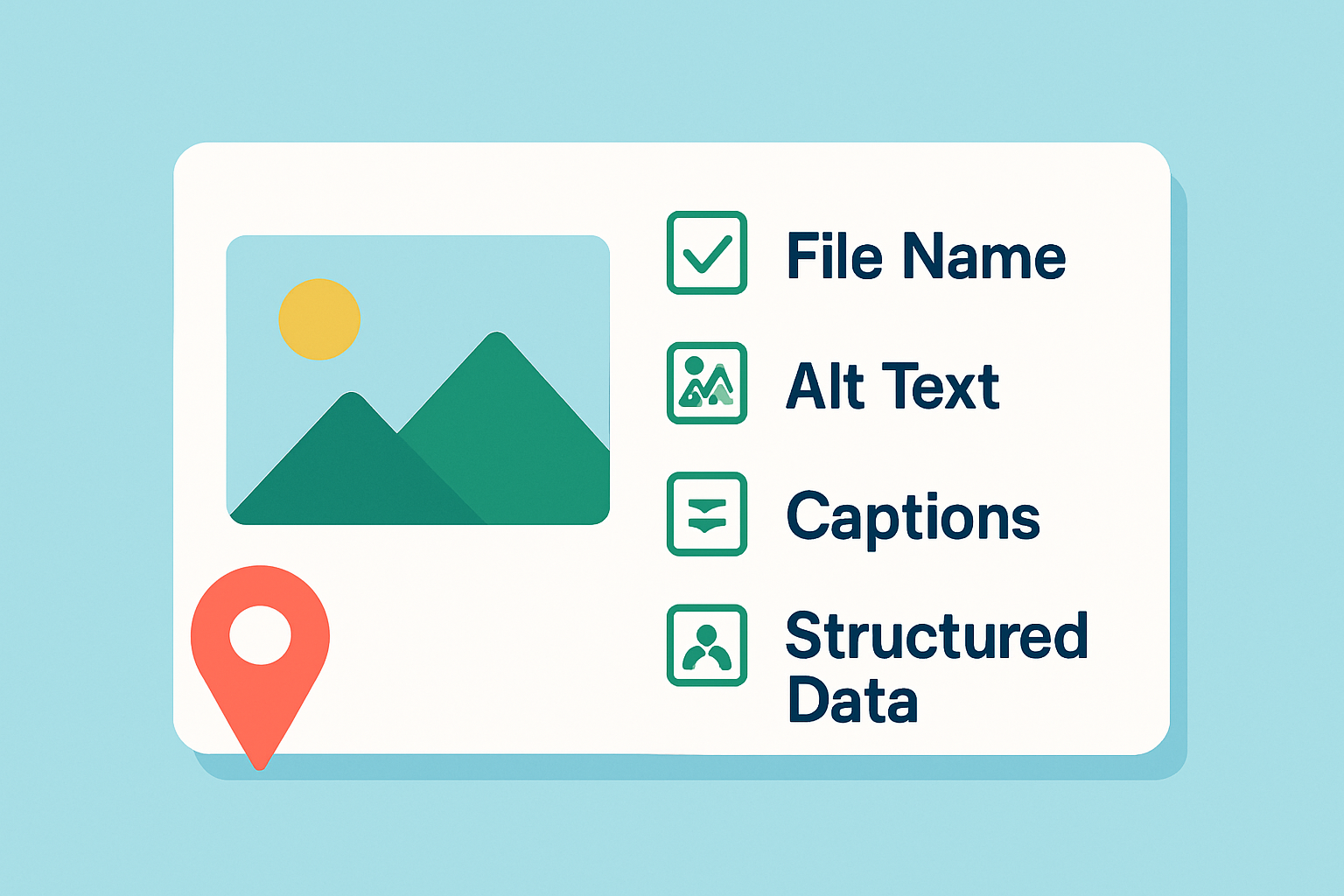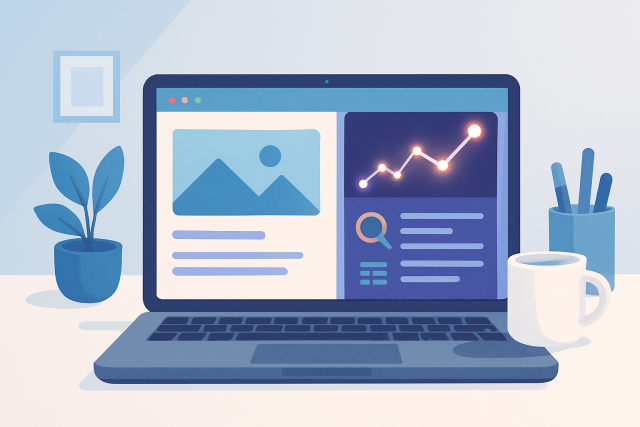
Guide to Search Engine Optimization for Restaurants
Unlock your restaurant's potential with effective SEO strategies tailored to local search. Learn how...

Optimizing images with local keywords is a important piece of the puzzle when it comes to boosting your local SEO. It not only makes your content pop up more in location-based searches but also helps you connect with users on a more meaningful level.
This detailed guide walks you through the essentials of image optimization and shows you how to seamlessly weave in local keywords. Along the way you will find practical strategies and some advanced tips plus real-world examples to help you confidently boost your local search presence using image SEO.
Image optimization is about striking the right balance between file size, format choice, responsiveness and load speed to boost your website's performance. For local businesses, getting images right improves user experience and helps search engines recognize your geographic relevance.
Local keywords are handy phrases that include geographic details like city names or landmarks. They work behind the scenes to connect search queries with your business’s real-world location and ensure your image SEO matches what people searching for local products or services want.
Effective local keyword research is a bit like detective work—it combines competitor analysis with SEO tools and customer insights to uncover the golden terms that really matter. When you tweak this research for images, you give your visual assets a chance to shout out the right local signals loud and clear.
Take a good, close look at your competitors’ images and how they cleverly weave in keywords. You might just stumble upon some golden opportunities.
Give local SEO tools like Moz Local or Mangools’ KWFinder a try because they are great for narrowing down keyword ideas that really hit home.
Tap into Google Keyword Planner to check out local search volumes and discover different variations that could be game-changers.
Have a peek at Google My Business insights to get a real sense of the queries people are actually typing in your neck of the woods.
Roll up your sleeves and dig into customer questions and reviews. It’s a goldmine for spotting naturally used local keyword phrases that really resonate.
Using local keywords in images calls for a thoughtful strategy that not only boosts SEO but also keeps the user experience smooth and enjoyable. Every little detail linked to the image chips in to signal search engines about the local connection.

Infographic illustrating key steps and elements for optimizing images with local keywords to enhance SEO
Picking a spot-on file name can actually give your image’s SEO a nice little boost. It’s best to go with clear, hyphenated phrases that sneak in local keywords tied to the image. Just don’t go overboard stuffing keywords—keeping it readable and relevant is the name of the game.
Alt text ought to clearly describe images in plain natural language and include local keywords when they make sense. Captions offer a second chance to spotlight the image’s local significance.
Structured data like schema.org markup is a handy way to give clear context to your images by pinpointing their content type and how they connect with your local business. Using types such as ImageObject lets you dive into the nitty-gritty details of your images, while the LocalBusiness schema wraps in your geographic info to paint a fuller picture. This combo helps search engines get what your images are all about and can nudge them into a more prominent spot in local search results.
There are plenty of tools and plugins out there that lend a hand with image optimization and local keyword research, making the whole process feel a bit more manageable and way more effective.
Keeping a close eye on how your image optimizations are holding up with local keywords is an important part of staying ahead in the long run. Analytics and SEO tools usually offer a treasure trove of insight into your rankings and where your traffic is coming from. They also show how people interact with your visual content.
Keep a close eye on local search rankings to see if your images are actually boosting visibility for those geo-targeted keywords.
Dive into Google Image Search traffic to truly get a feel for how visitors interact with your visuals because it’s often where the magic happens behind the scenes.
Use Google Analytics to dig deeper into user behavior on pages packed with images.
Don’t forget to check crawl data using handy tools like Screaming Frog to make sure your images aren’t hiding from the index bots.
Keep tabs on page speed with Google PageSpeed Insights and aim to strike that sweet spot where your site loads quickly without sacrificing the rich image experience users crave.
Many local image optimization efforts stumble because they lean too heavily on keyword stuffing and skip the important step of shrinking file sizes. They also ignore accessibility standards and clutter things with unrelated local keywords that confuse search engines more than help them.
"Striking the right balance between optimization and user experience really does matter—a lot more than people sometimes give it credit for. It’s key to use natural, everyday language and keep accessibility front and center, all while weaving in that local flavor. When done well, this approach not only boosts your SEO but also keeps the site a breeze to navigate, no added headaches involved."
Pick images that truly strike a chord with your local audience—those that make people feel right at home.
Dive into detailed local keyword research using trusty tools like SEMrush and Mangools and zero in on terms that really relate to your images.
Get technical with your images by compressing them properly and choosing the ideal formats. Sneak in local keywords in file names and alt text because every little bit helps.
Sprinkle in some context with captions, titles, and structured data to give your images extra local flavor and beef up their relevance.
Keep a close watch on how things are performing using analytics and SEO tools. Check out how your rankings, traffic and engagement are shaping up over time.
Tweak and refine your strategy by adjusting keywords, boosting technical SEO and updating your content based on what the data is telling you. It’s all about staying sharp and responsive.
If you stick to this straightforward workflow while optimizing images with local keywords, you’ll not only boost your local image SEO but also attract more of the right visitors.

Unlock your restaurant's potential with effective SEO strategies tailored to local search. Learn how...

Unlock your Weebly site's full SEO potential with expert tips and simple tweaks designed to improve...

Unlock the full potential of your car dealership's online presence with this comprehensive guide to...

Streamline your SEO workflows with the top project management software reviewed here, designed to he...